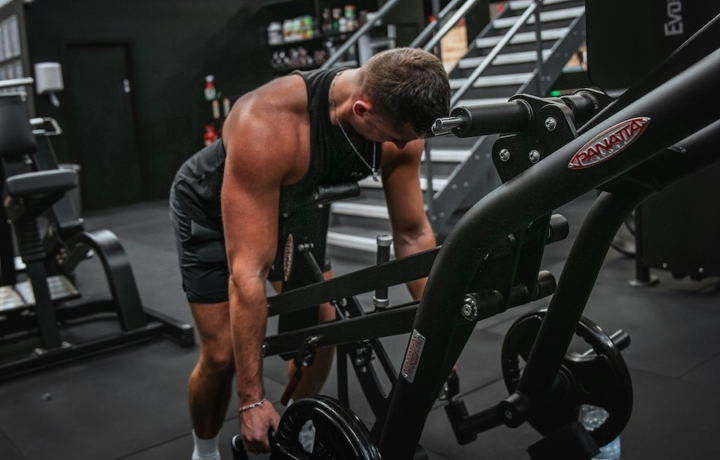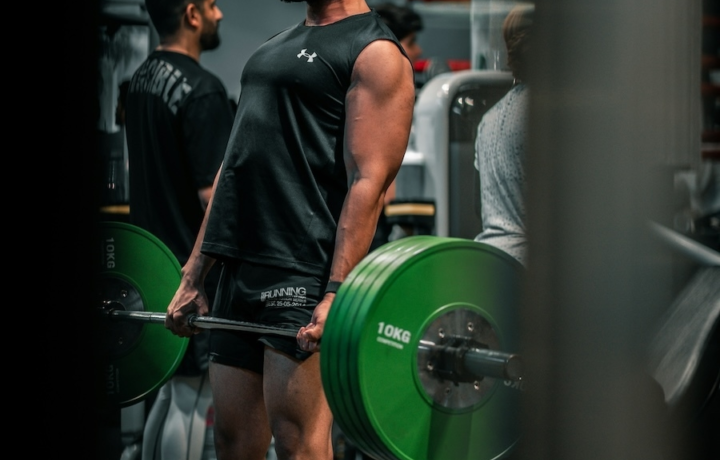Exercise
Incline Bench Barbell Row

Incline Bench Barbell Row
How to Perform
- Set an adjustable bench to a 30-45 degree incline and position a barbell on the floor in front of it.
- Straddle the bench facing the back pad, chest against the incline, with feet planted firmly on the floor for stability.
- Reach down and grasp the barbell with an overhand grip slightly wider than shoulder-width, arms fully extended.
- Brace your core and pull your shoulders back and down, maintaining a neutral spine position throughout the movement.
- Take a deep breath in, then exhale as you pull the barbell toward your lower chest by driving your elbows up and back.
- Squeeze your shoulder blades together at the top of the movement, holding this contracted position briefly.
- Inhale as you lower the barbell with control back to the starting position, allowing your arms to fully extend without rounding your back.
- Maintain tension in your upper back throughout the entire set, focusing on pulling with your back muscles rather than your arms.
Important information
- Keep your chest pressed firmly against the bench throughout the entire movement to prevent swinging or using momentum.
- Adjust your grip width based on your shoulder mobility and which part of the back you want to target—wider grip emphasizes the upper/outer back while narrower grip focuses more on the mid-back.
- Make sure your neck stays in a neutral position aligned with your spine; avoid looking up or straining your neck forward.
- If you experience lower back discomfort, try decreasing the bench angle or switching to a supported chest-supported row machine.

Incline Bench Barbell Row
Exercise Details
Primary Muscles
Muscle Groups
Mechanic
Risk Areas
Built for progress
Take the guesswork out of training
Create personalized AI-powered workout plans that evolve with you. Train smarter, track every rep and keep moving forward, one workout at a time.






The Incline Bench Barbell Row stands as a formidable back-building exercise that takes the traditional barbell row and adds a strategic twist. By positioning your chest against an incline bench, this variation eliminates the lower back strain often associated with bent-over rows while simultaneously increasing the targeted engagement of the lats and traps. This intermediate-level movement has earned its place in bodybuilding routines for good reason. The supported position creates a fixed angle that allows lifters to focus purely on the pulling mechanics without compensating with body momentum. Your upper back muscles: particularly the latissimus dorsi and trapezius, receive concentrated tension throughout the movement's range of motion, creating the stimulus needed for that coveted back width and thickness.
For strength enthusiasts, the Incline Bench Barbell Row delivers impressive functional benefits. The exercise develops posterior chain power that translates to improved deadlifts, enhanced posture, and greater overall pulling strength. The stabilized position also allows many lifters to handle heavier loads than they might with unsupported variations, making it an effective strength-building tool. What separates this exercise from other rowing variations is the muscle activation pattern. The angle of pull creates a unique stress distribution across the upper back, hitting areas that might be undertargeted in conventional rows.
This makes it particularly valuable for bodybuilders looking to address lagging areas or create more balanced development across the entire back musculature. When incorporated into a well-designed training program, the Incline Bench Barbell Row can serve as either a primary back movement or as a secondary exercise to complement deadlifts and pull-ups. Its versatility makes it appropriate for both strength-focused phases and hypertrophy-oriented training blocks. For those serious about building an impressive back that combines both aesthetic appeal and functional power, this exercise deserves consideration as a regular fixture in your routine.
FAQ - Incline Bench Barbell Row
The Incline Bench Barbell Row primarily targets the latissimus dorsi (lats) and trapezius muscles, while also engaging the rhomboids, rear deltoids, and biceps as secondary movers. The incline angle creates unique tension distribution across the upper back, hitting areas that might be undertargeted in conventional rows.
Set the incline bench to a 30-45 degree angle, position your chest firmly against the pad, and allow your arms to hang straight down while holding the barbell. Your feet should be planted firmly on the floor with knees slightly bent, creating a stable base that allows your upper body to remain fixed throughout the movement.
The most common mistakes include rounding your lower back, rotating your hips instead of keeping them square, rushing through the movement, and not hinging properly at the hips. Focus on maintaining a neutral spine, moving with control, and keeping your standing knee slightly soft rather than locked.
Unlike traditional bent-over rows that place significant stress on your lower back, the incline bench provides crucial support that eliminates this strain. This supported position also allows for heavier loads, more controlled form, and creates a fixed angle that prevents using body momentum to cheat the movement.
Include this exercise 1-2 times weekly as either a primary back movement on dedicated back days or as a secondary exercise following deadlifts. For hypertrophy, perform 3-4 sets of 8-12 reps; for strength, try 4-5 sets of 4-6 reps with heavier weight and longer rest periods between sets.







